Organizing Site Content Effectively
In an earlier post I discussed the balance that must be struck between template driven design and full on user-creativity. Below is the strategy employed by the robotics playground, which provides an array of templates to get you started on organized project documentation, fast.
General Layout
This layout encompasses all general publishing needs. The layout is flexible and allows you to document your project as you see fit. Use it to create unique layouts and present novel ideas.
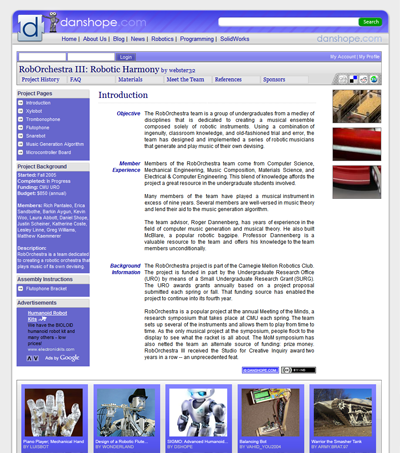
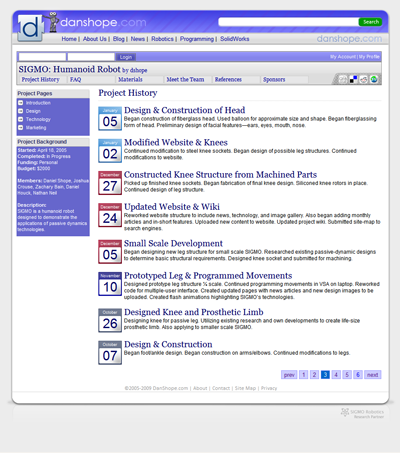
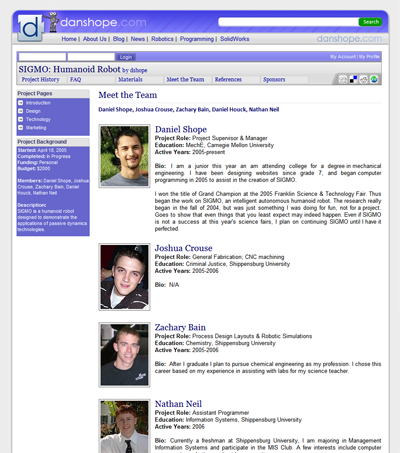
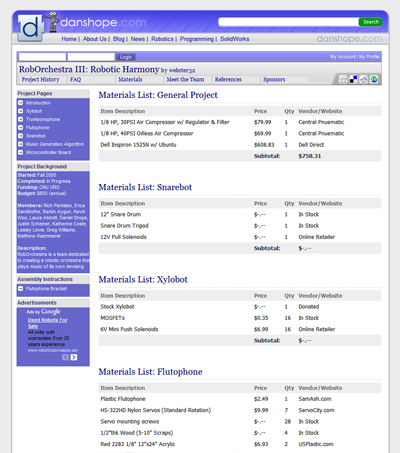
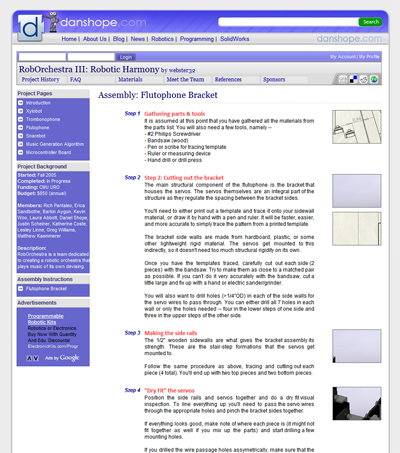
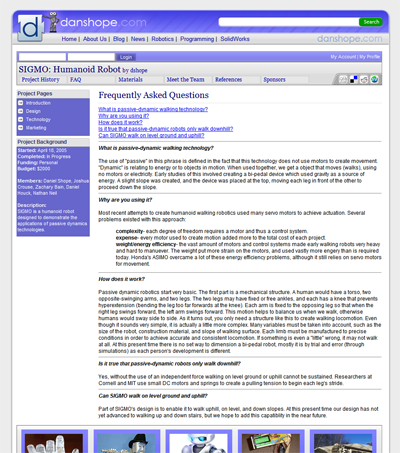
General Layout
This layout encompasses all general publishing needs. The layout is flexible and allows you to document your project as you see fit. Use it to create unique layouts and present novel ideas.

History
The project history layout incorporates elements specific to documenting your project’s progress over time. Use it like a journal in realtime and get updates published to your project’s home page!

Meet the Team
Create a members page where viewers can meet the members of your team. Who knows, it could be a great way to get a job offer or put a plug in for your website/blog.

Materials/Parts List
One of the least actively documented facets of a project is purchasing. A few months or years from now you probably won't remember what's in a particular project without tearing it apart. Avoid the hassle and allow others to reproduce the awesomeness you created!

Assembly Instructions
The cousin of the parts list, assembly instructions can prove vital to continuing projects. Popular projects will encourage future development from other members by providing some instructions for reproduction. It's a great way to involve the community.

Frequently Asked Questions
A great way to involve users interested in your project is to provide a question and answer area where they can quickly learn background and supporting information about the technologies you use in your project..

These are just a few of the templates that allow you to create site content. There's more where they came from, and based on your suggestions I'm sure we'll create more. Again with the balance, there won't be so many templates that it's hard to choose between 2, or too many to look at...!
What templates would you like to see/use?
Labels: news, roborchestra, robotics playground, SIGMO, UPDATE
 Subscribe to DanShope.com
Subscribe to DanShope.com